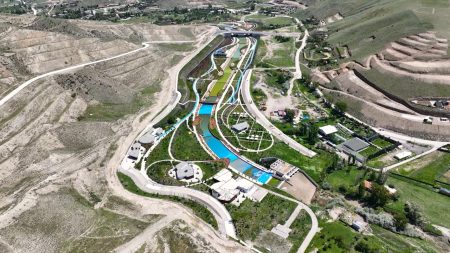Balloon Pilots in Cappadocia are Highlighted for their Services to Tourists
Every year, Cappadocia hosts visitors from all over the world and contributes significantly to the country’s tourism industry. In Cappadocia, balloon pilots offer rides to tourists on days when the weather conditions are suitable for flight, with an average of 250 balloon flights taking place each year. Ensuring the safe flight of the colorful balloons that dot the sky of Cappadocia, pilots face great challenges. Witnessing the sunrise for tourists who want to experience a memorable flight, pilots begin their long and demanding shifts late at night while carefully preparing the balloons, weighing tens of kilograms, in different parts of the region to monitor weather conditions.
Balloon pilots in the region make great efforts to ensure the safety of passengers amidst the rapidly changing weather conditions, risks arising from sudden changes in wind, transitions between low and high air currents, and geographical obstacles. Pilots ensure the safe flight of tourists at heights of meters by determining their direction against the wind with a single rope due to the absence of a braking system in the balloons. Along with introducing the region to tourists, pilots continuously strive to prevent any accidents by ensuring that approximately 150 balloons do not touch each other in a tight area while also maintaining constant communication with surrounding balloons and ground crew. Pilots, who must undergo continuous training and hold various certifications to ensure flight safety, also have to cope with increasing costs as time goes on.
Describing flying in a hot air balloon as akin to “flying in a dream” or “taking off on a balcony,” pilot Tankut Demir highlights the unique experience he offers to his passengers in Cappadocia’s balloon visual show. Starting their flights half an hour before sunrise, pilots begin their day with the preparation of balloons and plan the takeoff and landing accordingly, considering various factors such as wind conditions. Demir emphasizes that their work is not limited to flying the balloon in the sky but also involves a meticulous preparation process, early shifts often resembling night work, and coordination with other balloons in the sky. Despite the challenges, Demir acknowledges the enchanting aspects of the profession, stating that he still encounters mesmerizing moments on every flight, reinforcing his passion for aviation.
Noting that flights are carried out based on visible flight conditions, Demir emphasizes that factors such as wind, rain, snow, and fog can hinder flight operations. With tourists generally staying for short periods, pilots sometimes struggle to explain to guests when flights are not possible. In such cases, safety remains the top priority, and passengers who extend their stay due to flight cancellations further illustrate the dedication to ensuring a safe and unforgettable experience for visitors. With limited control mechanisms in place as there is no braking system in hot air balloons, pilots meticulously plan their flights by tracking wind patterns at different altitudes in various directions and speeds, making the profession both challenging and rewarding.
Addressing the issue of tourists who may fear heights during flights, Demir assures that pilots prioritize maintaining their composure to intervene calmly in such situations. Despite the region being protected by UNESCO, Demir highlights the issue of irresponsible individuals littering the area with debris and rubble, which pilots can see more clearly from the air and find challenging to explain to tourists during flights. He urges locals to be mindful of the issue and emphasizes the importance of preserving the natural beauty of Cappadocia for future generations.















